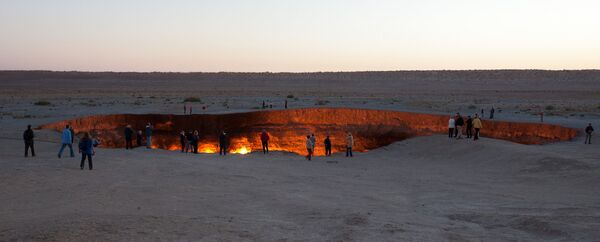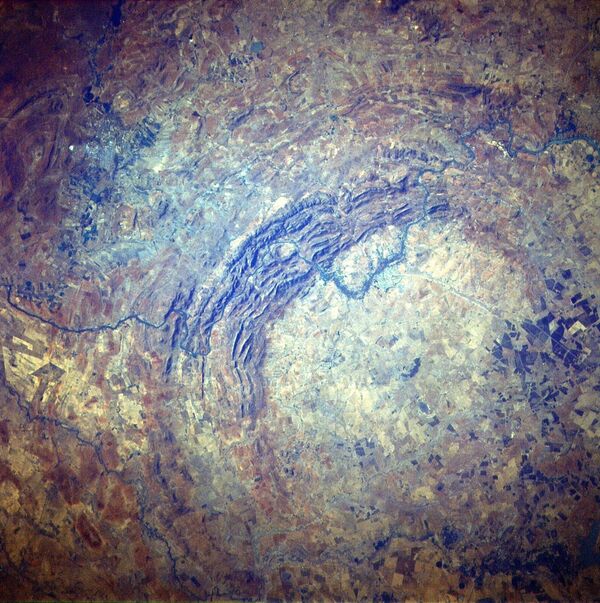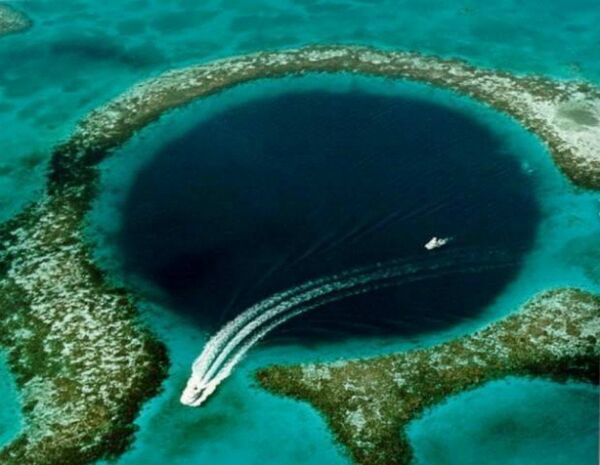Mir Mine, Russia

Development site of the "Mir" diamond pipe near the town of Mirny
© Sputnik / Aleksandr Utkin
/ The "Mir" diamond mine in Yakutiya is 525 meters deep and has a diameter of 1.2 kilometers; it was opened in 1955, following the opening of the Zarnitsa mine in Yakutiya in 1954, to meet the USSR's requirement for industrial diamonds. The open-pit mine produced about two million carats of diamonds annually, and closed in 2001.
Kimberley Mine, South Africa

Open-pit diamond mine (known as the Big Hole or Kimberley Mine) in Kimberley, South Africa.
© Photo : Wikipedia/Irene2005
The 500 meter-wide Kimberley Mine in South Africa, also known as the "Big Hole," was first excavated in 1871 during the Gold Rush on a farm owned by the De Beers brothers. Mining operations at the site ended in 1914 and it became a tourist attraction in the 1960s. In 2015 the De Beers Company sold its last remaining assets in the town of Kimberley, which was the center of the 19th century exploration frenzy. More recently, the name of the town has become associated with the 2003 process established to prevent the illegal sale of "blood diamonds."
Door to Hell, Turkmenistan

The door to Hell in Darvaza, Turkmenistan
© Flickr / Martha de Jong-Lantink
The "Door to Hell" was created in 1971, when oil prospectors in the USSR drilled at a site close to Derweze, Turkmenistan, in the belief that oil was below the surface. When an oil rig collapsed into a large crater it transpired that the site contained natural gas, which geologists feared might poison the local population with its noxious emissions. In order to prevent the gas from spreading, the experts set it alight, with the unexpected result that the hole still burns today.
Sedan Crater, USA

The Sedan Crater
© Photo : Wikipedia/Federal Government of the United States
The Sedan Crater was formed as a result of an underground nuclear test carried out on July 6, 1962 at the Nevada Test Site. It shot 12 million tons of earth into the sky and created a crater over 100 meters deep and 390 meters wide.
Moray Ruins, Peru

The Incan agricultural terraces at Moray
© Photo : Wikipedia/Philipp Weigell
Moray is an archaeological site in southeastern Peru approximately 50 km northwest of Cuzco, built by the Inca civilization. The construction consists of circular hollows linked by multiple staircases; the largest holes are approximately 150 meters deep, and it is thought that the Incas used them for agricultural research.
Great Blue Hole, Belize
The Great Blue Hole is an underwater sinkhole off the coast of Belize, part of the Belize Barrier Reef Reserve System. The hole measures over 300 meters across and 125 meters deep, and is believed to be the largest of its kind. It was formed during several glacial events starting more than 150,000 years ago.
Vredefort Crater, South Africa

The multiple-ringed Vredefort Crater
© Photo : Wikipedia/Júlio Reis
The Vredefort Crater was formed when an asteroid struck Earth about two billion years ago; it is the largest verified impact crater on Earth, and is believed to have been about 300 kilometers across at the time of its formation.



